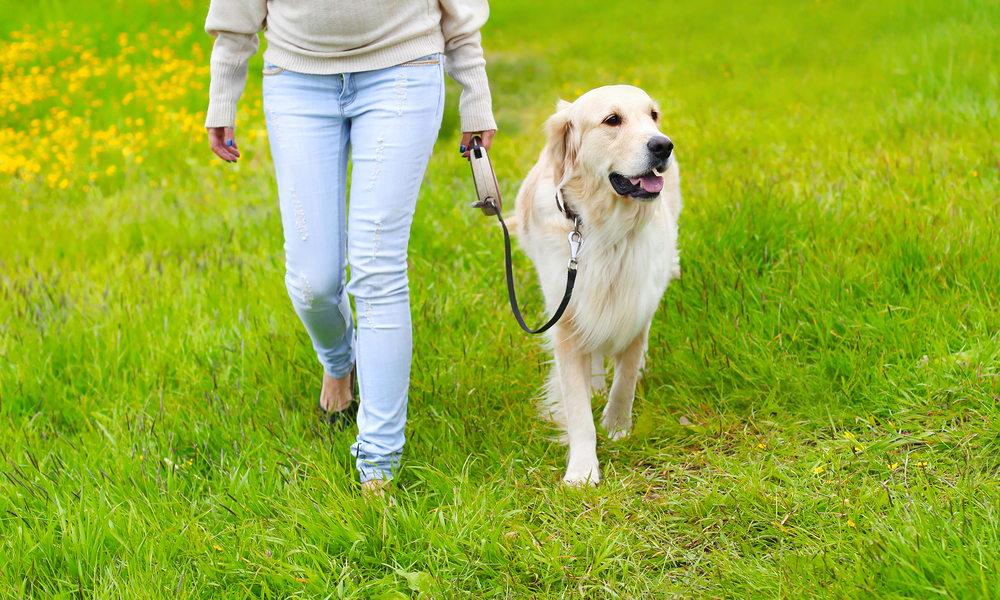Walking your dog is about more than just physical exercise; it’s a key part of their mental and emotional health, too. These outings not only strengthen the bond you share with your pet but also offer them a chance to explore and interact with the world, aiding in their overall development. Moreover, these walks can be a great opportunity for socialisation, introducing your dog to new experiences and environments. In this guide, we’ll explore practical tips and training techniques to make your dog’s walks more enjoyable and fulfilling, ensuring you both get the most out of these precious moments together.

1. Establish a Consistent Walking Schedule
Consistency is key when it comes to walking your dog. Setting up a regular walking schedule not only helps manage your dog’s energy but also establishes a comforting routine, making them feel secure and at ease. Just imagine their excitement and joy as they realize it’s almost time for their daily adventure—a time they eagerly await every day.
Additionally, sticking to a consistent walking schedule goes a long way in managing behaviour. Dogs, much like us, benefit from having a structured routine, as it brings them a sense of stability and safety. By carving out time each day for a walk, you’re nurturing a positive and affirming relationship. This regular commitment to their happiness turns each walk into an opportunity to strengthen the trust and connection you share with your furry friend.
2. Use the Right Leash and Collar
Selecting the appropriate leash and collar is important for a safe and enjoyable walk. A well-fitted collar paired with a sturdy leash can allow you to steer your dog away from potential hazards.
Furthermore, the type of leash and collar can vary depending on your dog’s size, breed and walking habits. Some dogs may benefit from a harness, especially if they tend to pull, while others might do well with a traditional collar. It’s about finding the right balance between making your dog feel comfortable and secure without compromising safety or control.
3. Implement Positive Reinforcement Techniques
Positive reinforcement is considered a powerful tool in dog training, especially when it comes to walking. Rewarding your dog for good behaviour, such as walking calmly by your side or sitting on command, can reinforce these behaviours, making them more likely to be repeated.
It might help build a language of love and reward where your dog understands that cooperation and good manners are always appreciated. Whether it’s a treat, a pat or verbal praise, these gestures of appreciation might impact your dog’s willingness to learn and follow commands.
4. Address Common Walking Challenges
Walking your dog can sometimes present challenges, from pulling on the leash to becoming overly excited at the sight of other dogs. These behaviours, while common, can be addressed with patience and consistent training. Understanding the root cause of these actions can be an important step towards finding a solution. For instance, a dog that pulls might be doing so out of excitement or a lack of exercise.
If pulling on the leash is a problem, consider practising stop-and-go techniques. If your dog becomes excessively excited or anxious on walks, implementing calming techniques such as gentle petting or comforting words might help. Remember, every dog is unique and finding the right approach may take time and patience.
Find Out More About Pet Care
Daily walks with your dog can provide an opportunity to deepen your connection and support their overall well-being. These tips and techniques might help you make these moments rewarding.
If you want to further support your pet’s health, consider contacting veterinary services. At Blue & White Veterinary Clinic, we provide comprehensive care for your pets. Whether it’s routine check-ups, emergency services or advice on pet care, our team is ready to assist.



